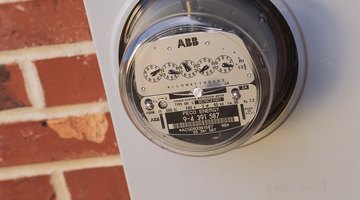A watt is a calculated unit for measuring electrical energy demand. If your appliance manufacturer label doesn’t state the watts the appliance demands, it should state the line voltage and amps the appliance needs. If you know the volts and amps, you can calculate watts. Knowing the watts an appliance demands is important for calculating the cost of the electricity your appliance consumes.
Calculating Watts
You calculate watts by multiplying the amps by the line voltage, typically 120 V in the United States. For instance, if your portable electric heater’s label says it draws 8.35 amps when operating, multiply 8.35 amps by 120 V to get about 1,000 watts of demand. Some high-demand electric appliances, such as cooktops, ranges, baseboard heaters and clothes dryers, operate on 240-V line voltage; for these, you multiply the appliance's amp rating by 240 to find the wattage.
Figuring Cost
Electricity is metered and sold by the kilowatt-hour. One kilowatt-hour equals 1,000 watts of demand on line for one hour. If you operate a 1,000-watt electric heater for two hours each day, you will have consumed 2 kilowatt-hours of electricity per day. If your utility charges 9 cents per kilowatt-hour, the heater will have cost you 18 cents per day or about $5.58 per month.
Related Articles
References
Writer Bio
Herb Kirchhoff has more than three decades of hands-on experience as an avid garden hobbyist and home handyman. Since retiring from the news business in 2008, Kirchhoff takes care of a 12-acre rural Michigan lakefront property and applies his experience to his vegetable and flower gardens and home repair and renovation projects.









